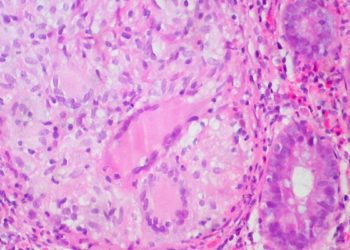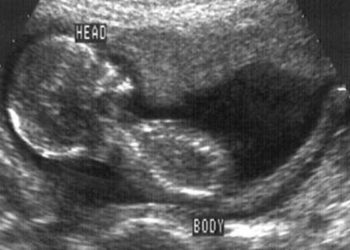2 Minute Medicine Rewind July 18, 2016
Ventricular Tachycardia Ablation versus Escalation of Antiarrhythmic Drugs
Implantable cardioverter-defibrillators (ICDs), often in conjunction with antiarrhythmic drugs, are used to reduce the risk of ventricular tachycardia in patients with previous myocardial infarctions. Recurrent ventricular tachycardia still occurs frequently and this randomized, controlled trial aims to investigate the most efficacious treatment, escalation of antiarrhythmic drugs or catheter ablation, for those patients who have recurrent ventricular tachycardia while being treated with an ICD and antiarrhythmic therapy. 132 patients underwent ablation within 14 days of randomization while still maintaining the baseline antiarrhythmic therapy. 127 patients were randomized to receive escalation of antiarrhythmic drugs, involving raising the dosage of amiodarone if the patient was on the drug already but being given less than 300 mg daily, adding mexiletine if the patient was already on a dosage of amiodarone above 300 mg daily, or starting the patient on an aggressive course of amiodarone if the patient was on another antiarrhythmic drug. The occurrence of death, appropriate ICD shock, or documentation of three or more episodes of ventricular tachycardia was the primary end point and occurred in 59.1% of those who received ablation therapy verse 68.5% of those receiving escalation of antiarrhythmic drugs, resulting in a hazard ratio for the ablation group of 0.72 (95% CI: 0.53 to 0.98, p=0.04). Analyzing for mortality by itself yielded no significant differences between the groups. The study concludes that, in terms of a composite of death, ICD shock, and multiple episodes of ventricular tachycardia, ablation is a more effective treatment than antiarrhythmic drug escalation in this patient population.
Cardiovascular disease and heart failure are major causes of morbidity and mortality in patients with type 2 diabetes. This cohort study, conducted in England from 2007 to 2015, investigates the relationship between different diabetes treatments (insulin, sulphonylureas, glipitins, metformin, glitazones, vs. other) and cardiovascular disease, heart failure, and all-cause mortality, using Cox hazard models to estimate hazard ratios. Glipitins did not result in a significant difference in cardiovascular disease but did lower heart failure risk by 14% and all-cause mortality risk by 18% as compared to non-use while glitazones lowered cardiovascular disease risk by 25%, heart failure risk by 26%, and all-cause mortality risk by 23%. Glipitins and metformin, used in conjunction, resulted in a 33% lowering of cardiovascular disease risk, 38% decreased risk for heart failure, and 40% decreased risk for all-cause mortality, and when used with sulphonylureas those reductions are 30%, 40%, 51%, respectively. Glitazones and metformin, when used together, yielded a 54% reduction in cardiovascular disease risk, 50% lowering of heart failure risk, and 45% risk reduction for all-cause-mortality. Sulphonylureas can be added to the glitazones and metformin regiment as well, and it results in reductions of 41% for cardiovascular disease, 46% for heart failure, and 56% for all-cause mortality. It was concluded that glipitins and glitazones are both associated with decreased risks of cardiovascular disease, heart failure, and all-cause mortality.
As the prevalence of overweight and obese individuals increases worldwide, this meta-analysis sought to investigate the effect of these conditions on all-cause mortality across 4 continents. 189 prospective studies that enrolled 3,951,455 patients from Europe, Australia and New Zealand, North America, and Asia were included in the analysis, excluding any smokers, those with chronic conditions at the time of recruitment, and those who died within five years of recruitment. 385,879 deaths were observed within this population and showed that, as compared with BMIs of 20-25 kg/m2 (HR: 1.00, 95% CI for 20-22.5 kg/m2: 0.98 to 1.02, 95% CI for 22.5-25 kg/m2: 0.99 to 1.01), the 18.5-20, 25-27.5, and 27.5-30 kg/m2 BMI ranges yielded more elevated hazard ratios of 1.13 (95% CI: 1.09 to 1.17), 1.07 (95% CI: 1.07 to 1.08), and 1.20 (95% CI: 1.18 to 1.22), respectively. BMIs between 30-35 kg/m2 resulted in a hazard ratio of 1.45 (95% CI: 1.41 to 1.48), BMIs of 35-40 kg/m2 led to a hazard ratio of 1.94 (95% CI: 1.87 to 2.01) and BMIs of 40-60 kg/m2 led to a hazard ratio of 2.76 (95% CI: 2.6 to 2.92). There was a log-linear relationship between BMI, as it increased above 25 kg/m2, and mortality, as every 5 kg/m2 increase in BMI resulted in a hazard ratio of 1.29 in North America (95% CI: 1.2.6 to 1.32), 1.31 in Australia and New Zealand (95% CI: 1.27 to 1.35), 1.39 in east Asia (95% CI: 1.34 to 1.44), and 1.39 in Europe (95% CI: 1.34 to 1.43). The study concludes that, relatively consistently across the four continents investigated, there is a clear association between BMI and increased all-cause mortality.
Olanzapine for the Prevention of Chemotherapy-Induced Nausea and Vomiting
Nausea and vomiting are frequently induced by cancer treatment with chemotherapy drugs, a detriment to quality of life in cancer patients. In this double-blind randomized study, olanzapine, an antipsychotic, was investigated for its efficacy in treating nausea and vomiting for those receiving chemotherapy for the first time, specifically cisplatin or cyclophosphamide-doxorubicin, very emetogenic chemotherapy drugs. While also receiving aprepitant, dexamethasone, or fosaprepitant and a 5-hydroxy-tryptamine type 3-receptor antagonist, 192 patients received 10 mg of olanzapine and 188 patients received placebo. Olanzapine treatment resulted in a significant increase in the percentage of patients with no chemotherapy-induced nausea for the 5-day period after chemotherapy (37% vs. 22%, p=0.002), as well as for the first 24 hours after chemotherapy (74% vs. 45%, p=0.002) and the time period between 25 and 120 hours (42% vs. 25%, p=0.002). The secondary end point of no vomiting or use of a rescue medication was also significantly higher for the olanzapine group. Those receiving olanzapine did have significantly increased sedation on the second day after chemotherapy, but the sedation was severe in only 5% of cases and no grade 5 toxic effects were observed. Investigators concluded that olanzapine significantly increased nausea prevention in the population described above.
Substance use contributes to both worse outcomes in HIV patients, as well as the spread of HIV throughout the world. In this randomized, controlled trial, case management and coordination of care, referred to as patient navigation, were investigated for their efficacy in lowering viral loads of HIV patients, both with financial incentives and without. 801 patients with HIV and substance use were selected from 11 hospitals across the US and observed from 2012 to 2014. 266 patients were randomized to receive the patient navigation intervention without financial incentives while 271 received the patient navigation and the financial incentive intervention and 264 received treatment as usual. 11 meetings with case management, along with 6 months of motivational interviewing techniques, were a part of the patient navigation intervention with the financial incentive group also eligible to receive up to $1,160 dollars for meeting goals that involve them with their HIV treatment and reduce substance use. After a year of treatment, 34.1% of patients that received usual treatment achieved HIV suppression to below 200 copies/mL and 35.7% of the group that received patient navigation without financial incentives achieved the same outcome, resulting in no significant difference between the two groups (1.6% treatment difference, 95% CI -6.8 to 10, p=0.8). 38.6% of the patient navigation group that also received financial incentives, yielding no significant difference when compared to the usual treatment group (4.5% treatment difference, 95% CI -4 to 12.8, p=0.68). This study, therefore, does not support the use of the patient navigation, with or without financial incentives, for this patient population.
Image: PD
©2016 2 Minute Medicine, Inc. All rights reserved. No works may be reproduced without expressed written consent from 2 Minute Medicine, Inc. Inquire about licensing here. No article should be construed as medical advice and is not intended as such by the authors or by 2 Minute Medicine, Inc.





![Adverse pregnancy outcomes associated with thrombophilias [Classics Series]](https://www.2minutemedicine.com/wp-content/uploads/2015/07/Classics-2-Minute-Medicine-e1436017941513-75x75.png)

